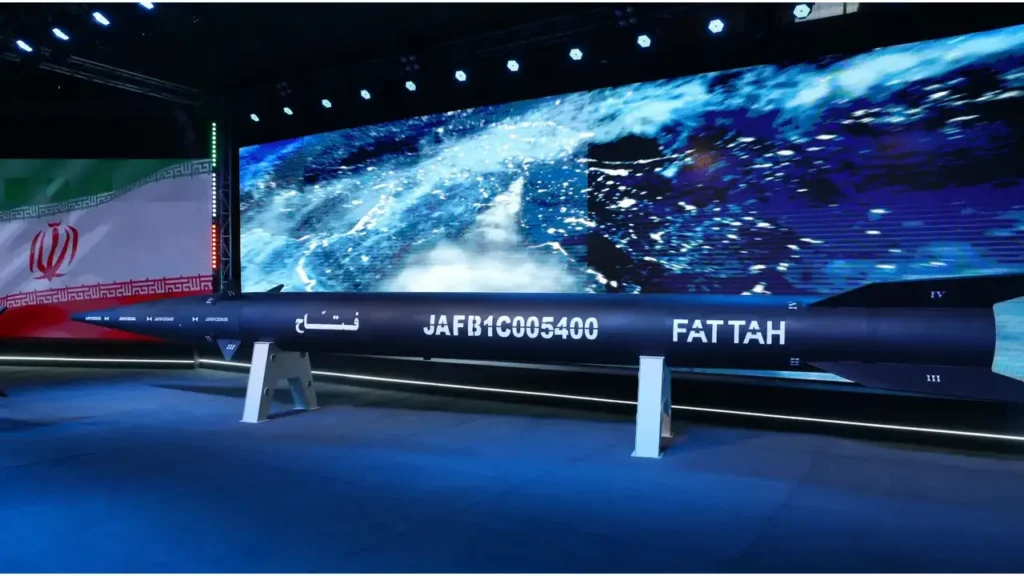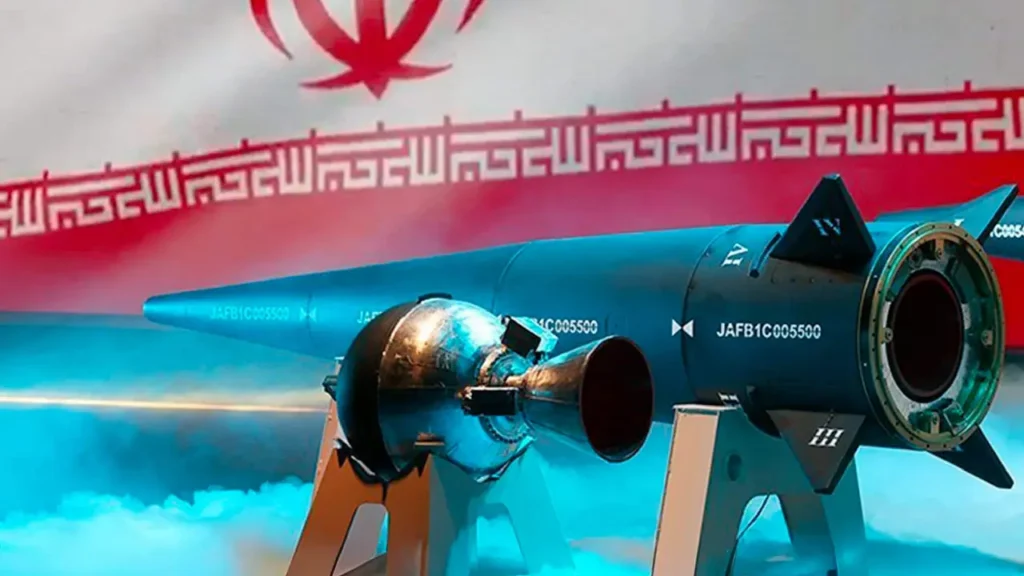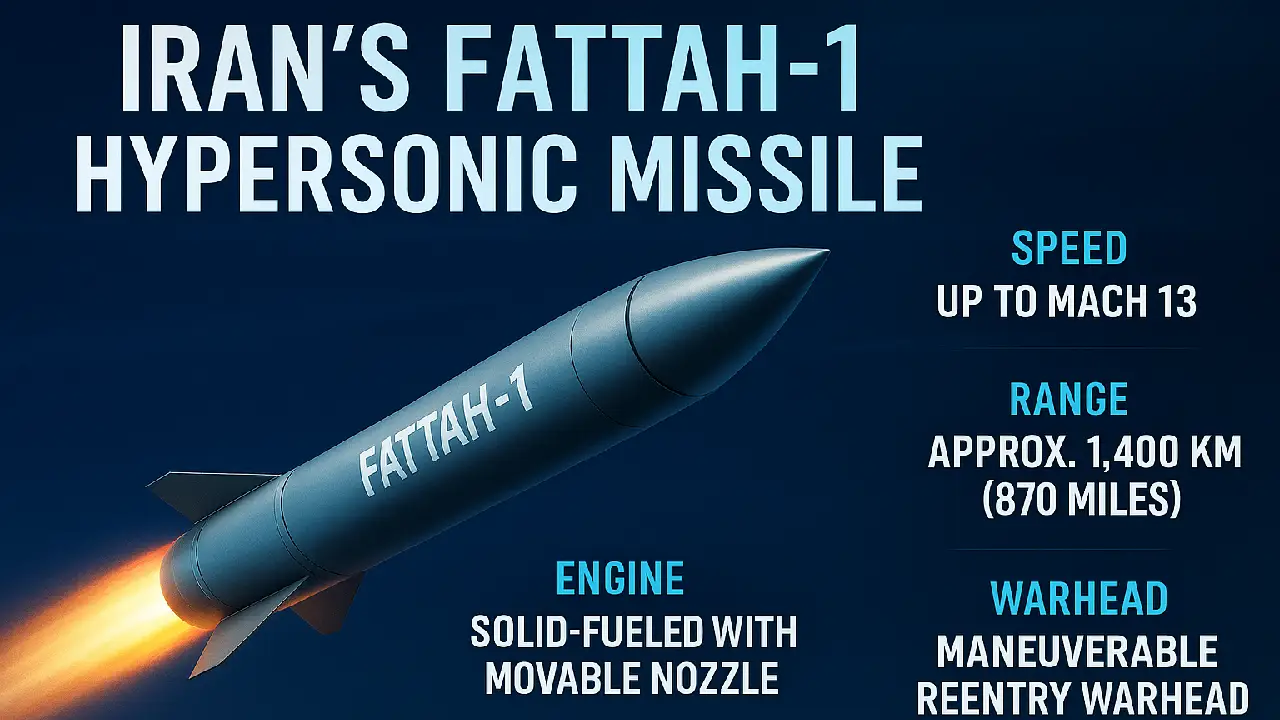In the rapidly evolving world of missile technology, hypersonic weapons are becoming the ultimate game-changers—and Iran Fattah-1 is one of the most talked-about among them. Unveiled by the Islamic Revolutionary Guard Corps (IRGC) in June 2023, the Fattah-1 hypersonic missile marks Iran’s entry into a new era of advanced weapons technology.
But what exactly is a hypersonic missile? What makes Fattah-1 so significant? And how could it alter the future of global defense strategies?

What Is a Hypersonic Missile?
A hypersonic missile is a weapon capable of flying at speeds greater than Mach 5—five times the speed of sound (~6,174 km/h or 3,836 mph). These missiles can maneuver in-flight, unlike traditional ballistic missiles, making them extremely difficult to detect and intercept.
Key Characteristics:
- Speed: Mach 5 and above
- Maneuverability: Can change trajectory mid-air
- Low-Altitude Flight: Flies within the atmosphere, making radar tracking difficult
- Fast Strike Capability: Reduces reaction time for defenses
Iran’s Fattah-1: The First Hypersonic Missile in Its Arsenal
Iran Fattah-1 missile (meaning “Conqueror”) is the country’s first indigenously developed hypersonic missile. Developed by the IRGC Aerospace Division, Fattah-1 represents a major technological leap for Iran’s missile program.

✳️ Technical Specifications of Fattah-1:
| Feature | Specification |
|---|---|
| Speed | Up to Mach 13 |
| Range | Approx. 1,400 km (870 miles) |
| Engine | Solid-fueled with movable nozzle |
| Warhead | Maneuverable reentry warhead |
| Navigation | Precision-guided system |
| Launch Platform | Mobile and fixed platforms |
Notable Innovation:
The Fattah-1’s second-stage engine features a steerable nozzle, allowing it to change direction mid-flight, making interception by air defense systems nearly impossible.
Why Are Hypersonic Missiles So Hard to Defend Against?
Traditional missile defense systems like the Iron Dome or THAAD are designed to track predictable ballistic trajectories. Hypersonic missiles like the Fattah-1:
- Fly faster than most radars can lock on
- Travel at low altitudes to avoid early detection
- Can maneuver, making them difficult to intercept
This combination makes them a nightmare for missile defense systems.
Global Implications of Hypersonic Missile Development
The emergence of weapons like Fattah-1 signals a shift in military capabilities—not just for Iran but for the global balance of power.
Potential Impacts:
- Military Deterrence: Countries may hesitate to engage militarily with nations possessing hypersonic capabilities.
- Arms Race: More countries will likely invest in hypersonic tech to keep up.
- Redefined Defense: Nations may need to develop AI-powered or space-based defense systems to counter hypersonic threats.
Fattah-1 vs. Other Global Hypersonic Missiles
Let’s see how Fattah-1 stacks up against other major hypersonic programs:
| Country | Missile Name | Max Speed | Range | Status |
|---|---|---|---|---|
| Iran | Fattah-1 | Mach 13 | 1,400 km | Operational |
| Russia | Avangard | Mach 20+ | 6,000 km | Operational |
| China | DF-ZF | Mach 10 | 2,000 km | Operational/Test |
| USA | ARRW | Mach 5–8 | 1,600 km | Testing Phase |
Though not the most powerful, Fattah-1 is notable because of its localized impact in the Middle East and its ability to change strategic calculations in the region.
What’s Next for Hypersonic Defense?
As countries like Iran deploy hypersonic weapons, the race is now on for effective defense systems. Future innovations may include:
- Laser-based interception
- AI-guided early warning systems
- Space-based missile tracking sensors
Final Thoughts
The Fattah-1 hypersonic missile is more than just a new piece of military hardware—it’s a symbol of Iran’s growing technological capability and a clear indication that the future of warfare is already here.
Understanding the technology behind hypersonic missiles is critical for anyone interested in modern military strategy, geopolitics, or defense innovation.







